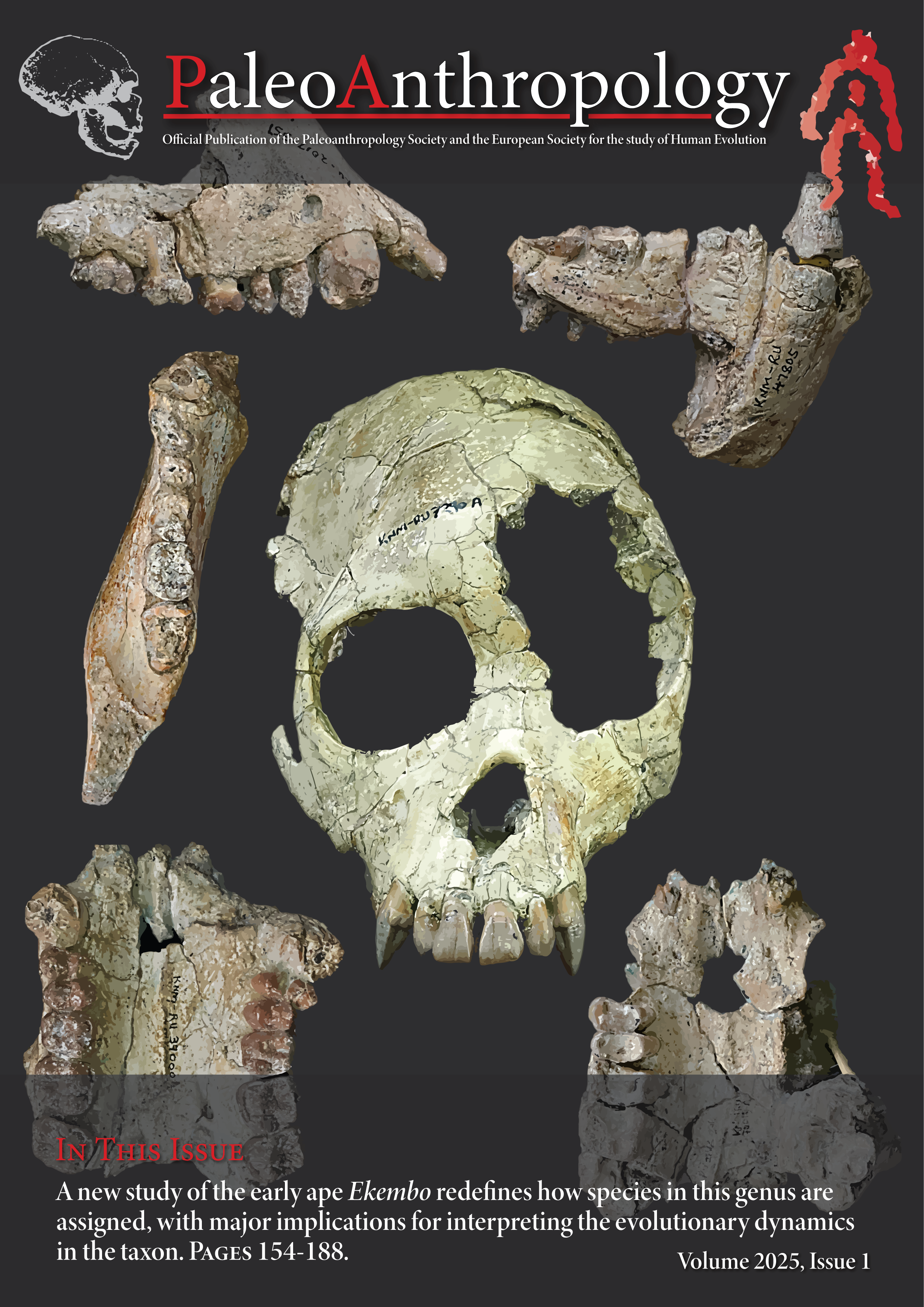The Alpha-Taxonomy of Ekembo
Main Article Content
Abstract
Two species of the early ape Ekembo are typically recognized in the abundant fossil collections from Rusinga and Mfangano Islands: Ekembo heseloni and Ekembo nyanzae. Widespread perception that these samples represent an anatomically similar, large and small species pair has led to the unrealistic situation where morphologically female canines were assigned almost exclusively to the ‘smaller’ species and morphologically male canines to the ‘larger’ species. This unlikely distribution, combined with discoveries of new specimens over the last 18 years, necessitates a reassessment of the alpha-taxonomy in Ekembo. We present revised species diagnoses and specimen allocations of the Ekembo sample based on observed and measured craniodental differences that are size-independent. Results of our specimen sorting demonstrate that Ekembo heseloni and Ekembo nyanzae are craniodentally distinct but overlap substantially in size; Ekembo nyanzae is, on average, only modestly larger than Ekembo heseloni. Contrary to most previous studies, we place KNM-RU 7290 in Ekembo nyanzae and KNM-RU 16000 in Ekembo heseloni. The new distribution of specimens also confirms that both species were present at all major collecting areas on Rusinga, rejecting the hypothesis that one species replaced the other over time, and suggests that Ekembo heseloni and Ekembo nyanzae were similarly abundant and had comparable degrees of sexual dimorphism.

